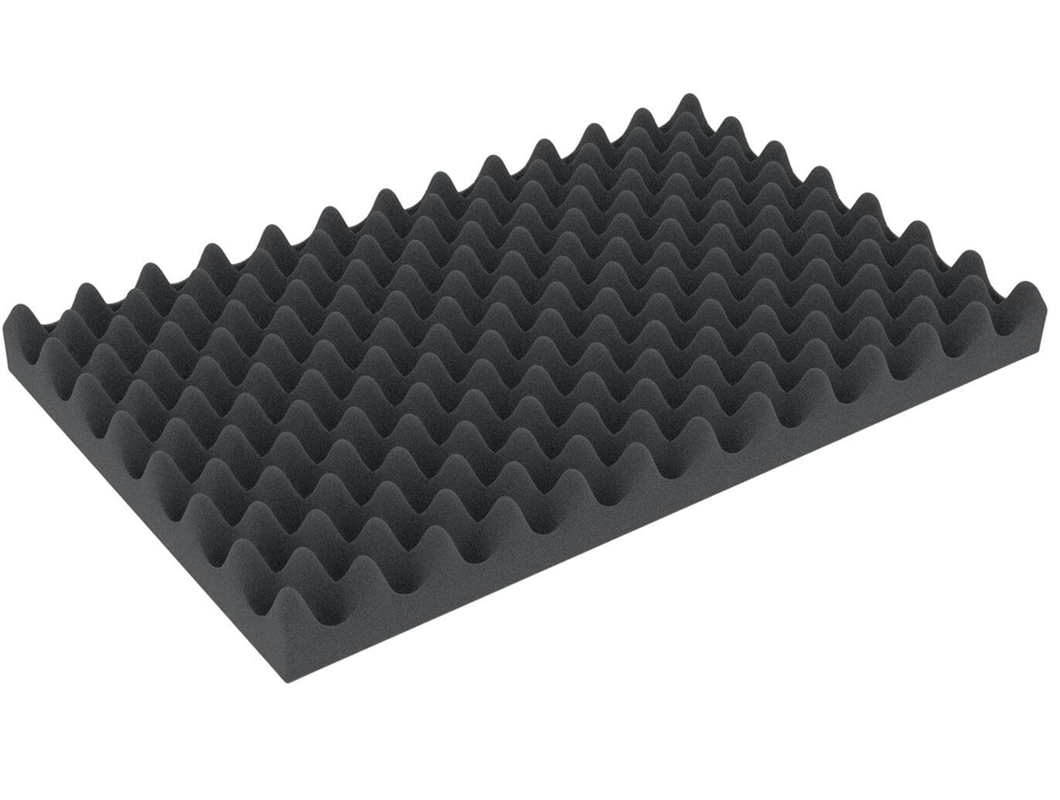
Egg Crate Foam: Smart Design for Comfort and Acoustic Performance
Egg crate foam, named for its distinctive wavelike or pyramidal pattern that resembles an egg carton, offers more than just visual appeal—it's engineered for performance. The contoured surface promotes superior air circulation, balanced pressure distribution, and effective sound absorption.
Because of these properties, egg crate foam finds wide-ranging applications across industries—from bedding and packaging to acoustic panels and medical cushioning. Typically made from polyurethane or memory foam, it is available in various densities and thicknesses to match different functional requirements.
Lightweight, versatile, and easy to customize, egg crate foam delivers a cost-effective way to improve comfort and acoustic control. Whether it's enhancing sleep quality, protecting delicate equipment, or reducing echo in studios, its efficiency comes directly from its intelligently engineered shape.
In this article, we'll take a closer look at its composition, advantages, and key factors to consider when selecting the right egg crate foam for your needs.
1. Key Characteristics of Egg Crate Foam
Egg crate foam is easily recognized by its contoured surface, designed to enhance both comfort and acoustic performance. Typically made from polyurethane, it comes in various densities, firmness levels, and colors to meet diverse application needs.
The distinctive peaks and valleys improve airflow, making the foam well-suited for temperature-sensitive environments such as bedding and seating. Its lightweight and compressible nature also simplify handling, installation, and transportation.
The depth of the surface pattern can be adjusted depending on the intended use—shallower contours provide firmer support, while deeper ones deliver better sound absorption. The material is easy to cut or shape using standard tools and can be further enhanced with flame-retardant or antimicrobial treatments to meet specific industry standards.
Key Features:
●Polyurethane construction
●Customizable thickness
●Lightweight and compressible
●Ventilated, temperature-regulating design
●Easy to cut and shape
●Contoured surface for enhanced function
2. Benefits of Egg Crate Foam
Egg crate foam delivers a range of practical benefits, beginning with enhanced comfort. Its contoured surface helps distribute pressure evenly, providing excellent support and relief—ideal for mattress toppers, seat cushions, and medical pads. The open, ventilated design also promotes airflow, helping regulate temperature and manage moisture, which is especially valuable in bedding and healthcare applications.
Beyond comfort, egg crate foam excels in acoustic performance. The peaks and valleys of its surface effectively trap and dissipate sound waves, reducing noise and echo in spaces like recording studios, server rooms, and industrial environments. Its efficient design achieves high performance without the need for extra layers or materials, making it a cost-effective choice.
Durable, flexible, and easy to work with, egg crate foam can be cut, shaped, or rolled to fit virtually any application. It maintains its form over time, resisting sagging or permanent compression.
Key Benefits:
●Excellent pressure relief
●Improved temperature and moisture control
●Effective sound absorption
●Lightweight and durable construction
●Cost-efficient performance
●Highly versatile for different uses
3. Common Applications
Egg crate foam is widely used across multiple industries thanks to its adaptable structure and practical performance.
In bedding and healthcare, it's commonly found in mattress toppers, hospital bed pads, and wheelchair cushions—applications where comfort, airflow, and pressure relief are essential for rest and recovery.
In acoustic environments, egg crate foam serves as wall or ceiling panels in studios, offices, and control rooms to minimize echo, reverberation, and background noise.
In packaging, its cushioning shape provides excellent shock absorption, making it ideal for protecting delicate or sensitive items such as electronics, instruments, and precision tools during transit.
Beyond industrial use, egg crate foam also appears in consumer and hobbyist applications—including pet beds, camping mats, and custom soundproofing kits. Its lightweight, breathable design also makes it a popular choice as an inner layer in protective cases for cameras, drones, and other equipment.
Typical Applications:
●Mattress toppers and bed pads
●Hospital and wheelchair cushions
●Acoustic wall and ceiling panels
●Protective packaging inserts
●Tool and equipment cases
●Pet and outdoor bedding
4. Considerations and Limitations
Although egg crate foam is versatile and effective in many applications, it does have certain limitations to keep in mind.
In high-pressure or heavy-load environments, the foam's raised peaks can become permanently compressed, reducing its cushioning and support performance. Lower-density variants may also wear out faster with frequent use.
Exposure to UV light and certain chemicals can cause the material to degrade unless it has been specially treated for resistance. For acoustic or industrial applications, it's important to verify whether the foam meets fire-retardant standards, as not all types are inherently flame resistant.
While its open structure improves airflow, egg crate foam is not fully waterproof. In humid or outdoor conditions, a cover or protective layer is recommended to maintain longevity. Over time, users may also notice color fading or surface crumbling due to natural material aging.
Key Considerations:
●Limited pressure and load capacity
●Sensitivity to UV exposure
●Vulnerability to chemical damage
●Fire safety and certification requirements
●Partial water resistance
●Potential aging, fading, or crumbling over time
FAQs about Egg Crate Foam
Q1: Is egg crate foam suitable for mattresses?
A1: Yes. It enhances comfort by relieving pressure points and promoting better airflow, making it a popular choice for mattress toppers and bedding.
Q2: Can egg crate foam be used for soundproofing?
A2: It's effective for absorbing sound and reducing echo, particularly in smaller spaces like studios, offices, or home recording rooms.
Q3: How long does egg crate foam last?
A3: Lifespan depends on density, frequency of use, and care, but typically ranges from 2 to 5 years under normal conditions.
English
العربية
Français
Русский
Español
Português
Deutsch
italiano
日本語
한국어
Nederlands
Tiếng Việt
ไทย
Polski
Türkçe
ភាសាខ្មែរ
Bahasa Melayu
ဗမာစာ
தமிழ்
Filipino
Bahasa Indonesia
magyar
Română
Čeština
қазақ
Српски
हिन्दी
فارسی
Kiswahili
Norsk
Svenska
українська
Ελληνικά
Suomi
עברית
Latine
Dansk
اردو
বাংলা
Afrikaans
नेपाली
Oʻzbekcha
Azərbaycan dili
Български
guarani
Hausa
Kurdî
Kurdî
Lietuvių
Wikang Tagalog
isiZulu



